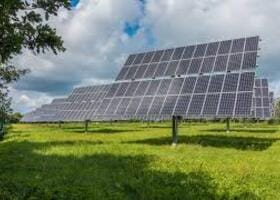Solar energy is the energy obtained by captured heat and light from the sun. Energy from the sun is referred to a as solar energy. Technology has provided a number of ways to utilize this abundant resource. It is considered a green technology because it does not emit greenhouse gases. Solar energy is a renewable energy source that harnesses the power of the sun to create electricity. As the world moves towards more sustainable energy sources, solar energy is becoming increasingly popular due to its many benefits, but it also has some drawbacks.
Solar energy is abundantly available and has been utilized since long both as electricity, and as source of heat.
How Solar Energy Generated
*The solar energy is the energy obtained by capturing heat and light from the sun. The method of obtaining electricity from sunlight is referred to as Photovoltaic method. This is achieved using a semiconductor material.
*The other form of obtaining solar energy is through thermal technologies, which gives two forms of energy tapping methods.
1. The first is Solar Concentration, which focuses solar energy to drive thermal turbines.
2. The second method is Heating and Cooling systems used in solar water heating and air conditioning, respectively.
The principle of operation for both types of solar panels, solar photovoltaic (PV) and solar thermal, is the same. They absorb the raw energy of the sun and use it to create usable energy. In solar photovoltaic systems, this is done by generating electricity. , while thermal systems are used directly to heat water or air.
How Do Solar Panel Make Electricity?

Step1:SUNLIGHT ACTIVATES THE PANEL
Each individual panel is constructed of a layer of silicon cells, a metal frame, a glass casing surrounded by a special film, and wiring. For maximum effect, the panels are grouped together into “arrays” (an ordered series) and placed on rooftops or in large outdoor spaces. The solar cells, which are also referred to as photovoltaic cells, absorb sunlight during daylight hours.
Step2: THE CELLS PRODUCE ELECTRICAL CURRENT
Within each solar cell is a thin semiconductor wafer made from two layers of silicon. One layer is positively charged, and the other negatively charged, forming an electric field. When light energy from the sun strikes a photovoltaic solar cell, it energizes the cell and causes electrons to ‘come loose’ from atoms within the semiconductor wafer. Those loose electrons are set into motion by the electric field surrounding the wafer, and this motion creates an electrical current.
Step3: THE ELECTRICAL ENERGY IS CONVERTED
You now have solar panels working efficiently to transform sunlight into electricity, but the electricity generated is called direct current (or DC) electricity, which is not the type of electricity that powers most homes, which is alternating current (or AC) electricity. Fortunately, DC electricity can easily be changed into AC electricity by a gadget called an inverter. In modern solar systems, these inverters can be configured as one inverter for the entire system or as individual microinverters attached behind the panels.
Step4: THE CONVERTED ELECTRICICY POVERS YOUR HOME
Once the solar energy has been converted from DC to AC electricity, it runs through your electrical panel and is distributed within the home to power your appliances. It works exactly the same way as the electrical power generated through the grid by your electric utility company, so nothing within the home needs to change. Since you still remain connected to your traditional power company, you can automatically draw additional electricity to supplement any solar shortages from the grid.
Advantages of Solar Energy
*Renewable energy source
*Reduces electricity bills
*Diverse applications
*Low maintenance cost
*Technology development
Disadvantages of Solar Energy
*Cost
*Weather-dependent
*Solar energy storage is expensive
*Uses a lot of spaces
